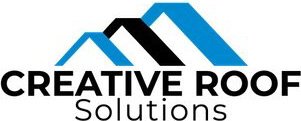Solar Panels vs. Solar Shingles: Which is the Better Choice for Your Roof?
As homeowners continue to seek energy-efficient solutions, solar power has become a leading option for reducing electricity costs and minimizing environmental impact. But when it comes to installing solar roofing, there’s an important decision to make: solar panels or solar shingles? Both options have unique advantages and drawbacks, and the right choice depends on a variety of factors, including aesthetics, efficiency, cost, and long-term performance. In this guide, we’ll break down the key differences to help you make an informed decision.
Understanding Solar Panels
Traditional solar panels have been the standard for residential solar installations for decades. These panels consist of photovoltaic (PV) cells, typically made from silicon, which capture sunlight and convert it into electricity.
Key Features of Solar Panels:
Materials: Available in monocrystalline, polycrystalline, and thin-film variations, each offering different efficiency levels.
Installation: Mounted on top of an existing roof using racking systems, often requiring optimal placement for sun exposure.
Energy Efficiency: Among the most efficient solar technologies, with some panels reaching over 22% efficiency.
Cost: Generally more affordable than solar shingles due to mass production and widespread adoption.
Durability: Designed to last 25-30 years with minimal maintenance.
Customization Options: Solar panels offer flexibility in placement, allowing homeowners to adjust for optimal sun exposure.
Understanding Solar Shingles
Solar shingles, also known as solar roof tiles, integrate seamlessly into a home’s roof, functioning as both roofing material and an energy generator. Unlike bulky panels, these sleek shingles blend in with traditional roofing materials, providing a more subtle solar solution.
Key Features of Solar Shingles:
Aesthetic Appeal: Designed to match conventional shingles, making them virtually unnoticeable.
Functionality: Serve a dual purpose: protecting your home while generating electricity.
Efficiency: Typically less efficient than traditional panels, averaging between 13-17% efficiency per shingle.
Cost: Higher initial investment due to specialized installation and roofing replacement requirements.
Lifespan: Generally lasts 20-25 years, similar to standard asphalt shingles.
Weather Resistance: Built to withstand various weather conditions, similar to traditional roofing materials.
Aesthetic Differences: Which Option Looks Better?
One of the biggest factors for homeowners considering solar roofing is appearance.
Solar Panels: While highly efficient, they are mounted on top of your existing roof, which can alter the overall look of your home.
Solar Shingles: Designed to blend in with the roof’s structure, making them the preferred option for homeowners who want an integrated design without visible panels.
If maintaining your home’s curb appeal is a priority, solar shingles may be the better choice. However, for homeowners who prioritize energy production over aesthetics, solar panels remain the more efficient option.
Energy Efficiency and Performance
When comparing performance, solar panels generally produce more energy per square foot than solar shingles. This is because panels can be strategically angled for optimal sun exposure, while shingles are limited by the roof’s existing slope and orientation.
Key Performance Considerations:
Solar Panels: Higher energy output, making them a better option for homes with high energy demands.
Solar Shingles: While less efficient, they still provide sufficient energy generation for moderate electricity needs.
Climate Factors: In sunny climates with high solar exposure, both options perform well, but in areas with frequent cloud cover, high-efficiency panels may be the better choice.
Battery Storage: Both panels and shingles can be paired with battery storage systems to enhance energy reliability.
Installation Process and Costs
The installation process and costs vary significantly between the two options.
Solar Panels:
Mounted on existing roofing, requiring additional brackets and racking.
Quick and relatively simple installation by trained professionals.
Lower installation costs, making them a budget-friendly choice.
Can be added to an existing roof without major structural modifications.
Solar Shingles:
Integrated into the roofing system, replacing traditional shingles.
Best suited for new constructions or full roof replacements.
More labor-intensive installation, resulting in higher upfront costs.
Require specialized installers familiar with both roofing and solar technology.
Homeowners considering a roof replacement may find solar shingles to be a cost-effective solution, as they eliminate the need for separate roofing materials.
Durability and Maintenance
When it comes to longevity, both solar panels and solar shingles are built to withstand harsh weather conditions, but some differences exist.
Solar Panels:
Typically last 25-30 years with minimal maintenance.
Easily replaceable in case of damage or malfunction.
Proven resilience against hail, wind, and heavy snow.
Regular cleaning improves efficiency and extends lifespan.
Solar Shingles:
Lifespan of 20-25 years, similar to regular roofing shingles.
More vulnerable to damage due to their dual function as both a roofing material and solar generator.
Harder to repair or replace individual shingles compared to standalone panels.
Require periodic inspections to ensure optimal performance.
Roof Compatibility and Structural Considerations
Not all roofs are suited for both solar options. The structure, material, and overall condition of your roof play a significant role in determining whether solar panels or solar shingles are the best fit for your home. Before making a decision, homeowners should evaluate the following factors:
Roof Angle & Orientation
The angle and direction of your roof impact how much sunlight your solar system can absorb. Traditional solar panels are mounted on racks, allowing them to be adjusted to capture maximum sunlight. This makes them more adaptable for homes with complex or less-than-ideal roof orientations.
Solar shingles, on the other hand, are installed flush with the roof and cannot be adjusted once in place. If your roof has steep slopes or faces away from the sun, solar shingles may not be the most efficient option. Homeowners should assess whether their roof’s natural slope aligns with optimal solar exposure before committing to solar shingles.
Weight Load Considerations
Installing any solar system adds weight to your roof, and it’s important to ensure that your home’s structure can support it.
Solar panels are mounted on a racking system, which distributes their weight evenly across the roof. While they do add some load, most homes can support them without issue. However, in cases where a roof has existing structural concerns, reinforcements may be necessary.
Solar shingles act as both roofing material and solar technology, replacing traditional shingles. While they are not as heavy as some roofing materials (like tile or slate), they do add additional weight compared to standard asphalt shingles. If your roof’s structure is aging or already carrying significant weight, a structural assessment is essential before installation.
A roofing specialist can evaluate your roof’s ability to handle additional weight and recommend any necessary reinforcements.
Material Compatibility
Your roof’s existing material may determine whether solar panels or solar shingles are a viable choice.
Solar panels are highly versatile and can be installed on almost any type of roofing, including asphalt shingles, metal, tile, and even flat roofs with the appropriate mounting system.
Solar shingles are designed primarily for asphalt shingle roofs. They may not be compatible with certain materials like clay tile or metal without significant modifications. If you have a non-traditional roof, solar panels are likely the better option.
Existing Roof Condition
The age and condition of your roof are critical factors when deciding between solar panels and solar shingles.
If your roof is nearing the end of its lifespan (typically 15-20 years for asphalt shingles), it may not make sense to install solar panels that will last 25-30 years. In this case, replacing the roof with solar shingles could be a cost-effective solution, as it combines roofing and solar energy into one installation.
If your roof is in good condition and has many years of life left, adding solar panels can be a practical solution without requiring a full roof replacement.
Homeowners should also consider the potential costs of removing and reinstalling solar panels in the future if the roof needs repairs or replacement. If you anticipate needing a new roof soon, solar shingles could be a more practical long-term investment.
Shading and Obstructions
Trees, chimneys, vents, and other roof obstructions can impact the efficiency of your solar system.
Solar panels can be positioned strategically around obstructions to maximize exposure to sunlight. Even if part of your roof is shaded, the placement flexibility of panels ensures better efficiency.
Solar shingles are installed across the entire roof, meaning they are more susceptible to shading from nearby structures or trees. If a portion of your roof is in consistent shade, it may limit the overall effectiveness of solar shingles.
If your property has significant shading, a professional evaluation can help determine whether trimming trees or repositioning solar panels can improve energy production.
Ventilation and Heat Considerations
A properly ventilated roof is essential for maintaining energy efficiency and preventing excessive heat buildup.
Solar panels are mounted slightly above the roof, creating an air gap that allows for natural airflow and cooling. This can help reduce heat retention in the attic and improve energy efficiency inside the home.
Solar shingles are installed directly onto the roof, which may reduce ventilation compared to traditional shingles. Some homeowners have reported increased attic temperatures due to the heat absorption of solar shingles.
If your home already struggles with heat retention, it’s worth discussing ventilation options with a roofing expert before choosing solar shingles.
Professional Roof Inspection and Consultation
Before committing to solar panels or solar shingles, homeowners should schedule a professional roofing inspection to assess the structural integrity, material compatibility, and long-term feasibility of each option. A consultation with a roofing expert like Creative Roof Solutions can help you determine:
Whether your roof requires reinforcements before solar installation
If your roof’s angle and orientation will provide optimal solar exposure
The best solar option based on your home’s energy needs and structural condition
Whether now is the right time to install solar, or if a roof replacement is needed first
By considering all these factors, you can make an informed decision and ensure your solar investment provides the best return in terms of energy efficiency, durability, and cost-effectiveness.
Incentives and Financial Benefits
Both solar panels and solar shingles qualify for financial incentives that can significantly reduce installation costs.
Federal Tax Credits: Homeowners can receive up to 30% tax credit for solar installation.
State & Local Incentives: Some states offer rebates and performance-based incentives.
ROI Comparison: Solar panels often provide a faster return on investment due to their higher energy output.
Utility Rebates: Some utility companies offer rebates for solar energy adoption, further lowering costs.
By taking advantage of available incentives, homeowners can make solar energy more affordable and maximize their savings.
Environmental Impact
Both options contribute to reducing carbon emissions, but there are some sustainability differences:
Solar Panels: Lower environmental impact per watt produced, as they are highly efficient.
Solar Shingles: Reduce the need for traditional roofing materials, balancing their slightly lower efficiency.
End-of-Life Disposal: Recycling programs are available for both panels and shingles, ensuring minimal landfill waste.
Energy Independence: Both options allow homeowners to reduce reliance on fossil fuels and contribute to a greener planet.
Investing in solar energy not only helps homeowners cut down on utility bills but also supports a cleaner, greener future.
Choosing the Right Solar Solution for Your Home
Before deciding, homeowners should ask themselves:
What is my budget for installation and long-term maintenance?
Do I prioritize efficiency or aesthetics?
Am I replacing my roof soon, or do I need a solution that works with my existing one?
How much energy do I need to generate?
Do I plan to add a battery storage system?
A professional solar consultation with Creative Roof Solutions can help determine which system aligns best with your energy needs and financial goals.
Making the Best Solar Choice for Your Home
By consulting with a solar expert and evaluating your home’s structure, budget, and energy goals, you can make the best investment in sustainable, cost-saving solar technology. Creative Roof Solutions offers expert guidance, installation, and maintenance to help you choose the right solar system for your home. Contact us today to explore your solar roofing options!




